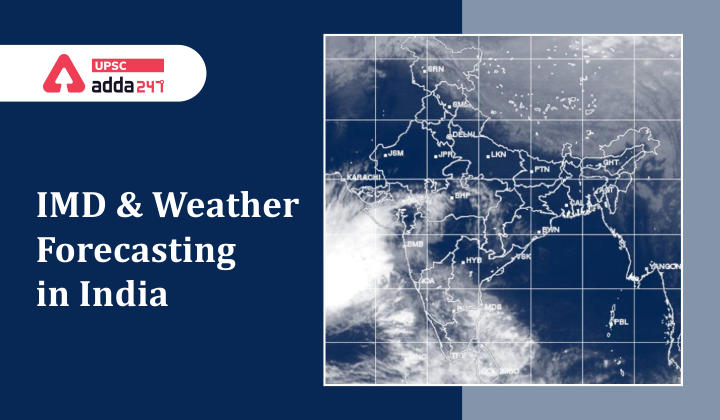Table of Contents
IMD and Weather Forecast in India- Context
- Recently, India Meteorological Department (IMD) said that while rain in September would be “above normal”, the overall June-September rainfall would be at the “lower end” of normal.
- The factors that caused the August deficit were a “negative” Indian Ocean Dipole.
- “Negative” Indian Ocean Dipole: it is characterized by warmer eastern Indian Ocean and colder closer to the Indian coast, which is considered unhelpful for the monsoon.

Get free video for UPSC CSE preparation and make your dream of becoming an IAS/IPS/IRS a reality
Indian Meteorological Department (IMD)- Key Points
- About: IMD, also referred to as the meteorological department was established in 1875.
- Headquarter: situated at Pune with regional offices at Mumbai, Kolkata, Nagpur, and Delhi.
- Parent Ministry: IMD is an agency of the Ministry of Earth Sciences of the Government of India.
- Mandate: It is the principal government agency responsible for meteorological observations, weather forecasting, and seismology.
Deepor Beel Wetland and Wildlife Sanctuary
Indian Meteorological Department (IMD)- Categorization of Rainfall distribution
- IMD uses Long Period Average (LPA) as a base to predict the expected amount of Monsoon rainfall in a particular year.
- Long Period Average (LPA): It is the average rainfall recorded during the months from June to September which is calculated during the 50-year period.
- Role of LPA: LPA acts as a benchmark in forecasting quantitative rainfall for the monsoon season every year.
- Categorization of Monsoon Rainfall: Based on LPA, IMD categorizes yearly monsoon rainfall on an all-India basis in below five categories-
-
- Normal or Near Normal: percentage departure of actual rainfall is +/-10% of LPA (rainfall between 96-104% of LPA).
- Below Normal: When the departure of actual rainfall is less than 10% of LPA, that is 90-96% of LPA.
- Above Normal: When actual rainfall is 104-110% of LPA.
- Deficient: When the departure of actual rainfall is less than 90% of LPA.
- Excess: When the departure of actual rainfall is more than 110% of LPA.
Taliban Rule in Afghanistan and Its Implications for India
Indian Meteorological Department (IMD)- Dynamical Monsoon Forecasting Model
- Dynamical Monsoon Forecast Model: It was recently adopted by IMD which uses the evolving weather patterns to predict monsoon.
- In the Dynamical Monsoon Forecast Model, weather conditions are simulated and projected into the future by the supercomputer.
- Unlike IMD’s previous statistical forecasting method, this model is useful for predicting rainfall over smaller spatial and temporal scales.
- Performance of the Dynamic Model: It is more accurate at forecasting impending changes in weather a week or two in advance, it has not proved reliable at long-range forecasting in the past three years.
- For instance, in 2019, the IMD forecast reduced monsoon rainfall at 96% of the LPA but India got record-breaking rainfall at 110% of the average.
- In 2020, it first forecast 100% of the LPA and updated it to 102%, but India again got a torrential 109% which was outside the 5% error window.
Hurricane Ida



 TSPSC Group 1 Question Paper 2024, Downl...
TSPSC Group 1 Question Paper 2024, Downl...
 TSPSC Group 1 Answer key 2024 Out, Downl...
TSPSC Group 1 Answer key 2024 Out, Downl...
 UPSC Prelims 2024 Question Paper, Downlo...
UPSC Prelims 2024 Question Paper, Downlo...
